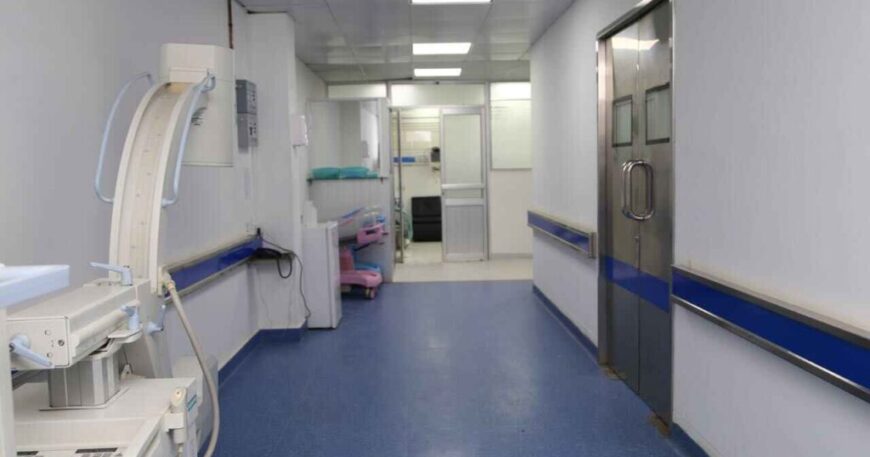
Top 7 Most Common Gynecological Surgery and Why They’re Done
Top 7 Most Common Gynecological Surgery and Why They’re Done
Gynecological surgeries are common procedures that many women may need at some point in their lives. From treating chronic pain to managing serious conditions, these surgeries play a vital role in women’s health. In this blog, we will walk you through the top 7 types of gynecological surgery, what they are for, and why they matter. Understanding your options can help you make informed decisions and feel more in control of your health.
H2: Why Gynecological Surgery May Be Needed
Women may need gynecological surgery for several medical reasons. According to the American College of Obstetricians and Gynecologists (ACOG), around 500,000 hysterectomies are performed every year in the U.S. alone. Common causes include:
- Uterine fibroids
- Endometriosis
- Ovarian cysts
- Heavy menstrual bleeding
- Chronic pelvic pain
- Certain types of cancer
When medications or non-invasive treatments are not enough, surgery becomes the most effective and lasting solution.
H3: 1. Hysterectomy
A hysterectomy involves the surgical removal of the uterus. It may also include the removal of the cervix, ovaries, and fallopian tubes, depending on the condition being treated. Common reasons includes:
- Uterine fibroids
- Uterine or cervical cancer
- Endometriosis
- Chronic pelvic pain
Types of hysterectomy:
- Abdominal hysterectomy: Traditional method with an incision in the abdomen.
- Vaginal hysterectomy: Done through the vaginal canal, often with faster recovery.
- Laparoscopic hysterectomy: Minimally invasive, using small incisions and a camera.
2. Myomectomy
This surgery removes non-cancerous growths known as fibroids from the uterus. Unlike a hysterectomy, a myomectomy preserves the uterus, making it a suitable option for women who wish to have children.
Benefits:
- Relief from heavy bleeding and pain
- Preserves fertility
Laparoscopic myomectomy is preferred for quicker recovery and minimal scarring.
3. Ovarian Cyst Removal
Ovarian cysts are fluid-filled sacs that develop on the ovaries. While many cysts go away on their own, some require surgical removal, especially if they:
- Are large
- Cause pain
- Are suspected to be cancerous
Surgical methods include laparoscopy and laparotomy depending on the size and type of the cyst.
4. Endometrial Ablation
This procedure removes or destroys the lining of the uterus (endometrium). It is recommended for women with:
- Heavy or prolonged menstrual bleeding
- Bleeding that doesn’t respond to medication
It’s a less invasive alternative to hysterectomy and usually performed as an outpatient procedure.
5. Laparoscopic Surgery
Also known as minimally invasive surgery, laparoscopy uses a thin, lighted tube to look inside the pelvic area and perform procedures through small incisions. It is used for:
- Diagnosing pelvic pain or infertility
- Treating endometriosis
- Removing ovarian cysts or ectopic pregnancies
Benefits:
- Faster recovery
- Less pain and bleeding
- Shorter hospital stays
At Shaafi Hospital, our gynecology & laparoscopic surgeons specialize in these advanced procedures.
6. Tubal Ligation
Often referred to as “getting your tubes tied,” this is a permanent form of birth control. It involves blocking or sealing the fallopian tubes to prevent pregnancy.
Types:
- Laparoscopic
- Postpartum (after childbirth)
- Mini-laparotomy
It is over 99% effective according to the Centers for Disease Control and Prevention (CDC).
7. Dilation and Curettage (D&C)
A D&C is a short procedure used to remove tissue from the uterus. It’s often done:
- After a miscarriage
- To diagnose uterine conditions
- To remove excess tissue
This surgery helps treat abnormal bleeding and is often used in evacuation gynecology cases.
Minimally Invasive vs. Traditional Surgery
Minimally invasive surgeries like laparoscopic procedures are now more common due to better outcomes. Compared to traditional open surgeries, they offer:
- Smaller incisions
- Less pain and bleeding
- Faster recovery
- Lower risk of infection
These are especially important in cases related to gynecologic oncology surgery, where precision and safety are crucial.
How to Know If You Need Surgery
You might need gynecological surgery if you experience:
- Chronic pelvic pain
- Irregular or heavy bleeding
- Painful periods or intercourse
- Difficulty getting pregnant
Your doctor will conduct methods of examination in gynecology such as:
- Pelvic exams
- Ultrasound
- MRI or CT scans
- Lab tests
Gynecological Surgery at Shaafi Hospital
Shaafi Hospital offers expert care in obstetrics and gynecology, with a focus on patient comfort, safety, and modern techniques. Our services include:
- Elective and emergency gynecological surgeries
- Gynecologic oncology surgery
- Evacuation gynecology and D&C procedures
- Advanced diagnostics and post-surgical care
We use evidence-based practices and follow the latest proceedings in obstetrics and gynecology to ensure high success rates and optimal outcomes.
FAQs
Q1: Are gynecological surgeries painful?
Most surgeries are done under anesthesia. Pain afterward is managed with medication.
Q2: What is the recovery time?
Minimally invasive surgeries often require only a few days of rest. Traditional procedures may take longer.
Q3: Are these surgeries safe?
Yes. At accredited hospitals with skilled surgeons, complication rates are very low.
Q4: Can surgery be avoided?
Yes, in some cases. But for certain conditions, surgery offers the most effective relief.
Q5: Does Shaafi Hospital offer laparoscopic surgery?
Yes, our expert gynecology & laparoscopic surgeons perform advanced procedures with excellent care.
